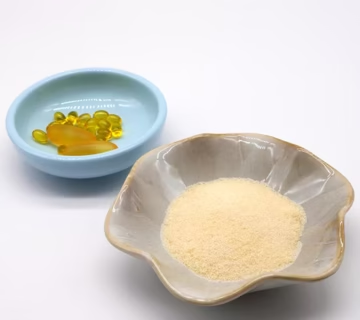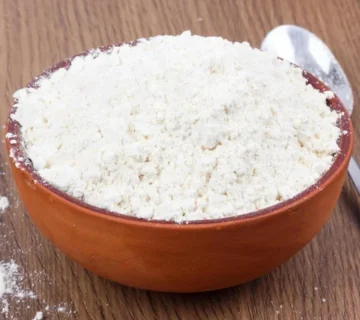Why “3 in 1 Coffee Ingredients Suppliers” Matter to Your Factory
Imagine your beverage line running flawlessly—your finished 3 in 1 coffee sachets (instant coffee + creamer + sweetener) deliver consistent taste, dissolve cleanly, resist separation, ship well, and remain stable on shelf. Now imagine that one minor supplier change causes clumping, off-flavor drift, or audit trouble, costing weeks of rework.
If you oversee procurement, production, or quality in a coffee/instant beverage plant, choosing the right 3 in 1 coffee ingredients suppliers is as strategic as selecting a roast profile or packaging. Your supplier decisions ripple through cost per sachet, batch consistency, burden on QC, shelf life, and brand reputation.
In this article, we’ll explore:
- What “3 in 1” ingredients entail at industrial scale
- Key selection criteria and trade-offs
- Pitfalls and common missteps in sourcing
- Step-by-step guidance for qualification & scaling
- Real-world manufacturing anecdotes
- Supplier comparison frameworks
- FAQs custom-tailored for factory owners, procurement leads, and plant managers
We’ll mention MT Royal in the context of sourcing breadth and reliability, and naturally reference Latamarko as an exemplar of premium Spanish-origin quality within ingredient systems. But most of this is about giving you usable insight—not a sales pitch.
Let’s get into it.
Understanding “3 in 1 Coffee Ingredients” in an Industrial Context
Definition & Core Components
When we say 3 in 1 coffee, we refer to a premix that combines:
- Instant coffee (spray-dried or freeze-dried)
- Non-dairy creamer (or dairy-based creaming agents)
- Sweetener / sugar or sugar substitute
In consumer packaging (stick sachets, single-serve packets), the end user just adds hot water. But behind that simplicity are multiple ingredient streams with stringent requirements.
Because these three components are preblended, your supplier must deliver a system that is optimized for:
- Solubility and rapid hydration (no floating residue, no lumps)
- Thermal and shelf stability
- Flowability, anti-caking, handling robustness
- Compatibility of acids, moisture, fats, emulsifiers
- Regulatory compliance (food-grade, labelable, audit traceability)
Calling someone a 3 in 1 coffee ingredients supplier means they can deliver one or more of those components—sometimes as a custom premix tailored to your specifications.
Related Key Terms (LSI & Context)
To deepen coverage, along the way we’ll refer to:
- instant coffee premix / instant beverage systems
- non-dairy creamer systems
- sweetener blends and bulking agents
- flow agents / anti-caking agents / hygroscopic control
- solubility, dissolution kinetics, hydration rate
- shelf life, oxidation, stability under humidity
- supplier qualification, audit, traceability
- cost per sachet, ingredient margin
- ingredient compatibility (ph, ionic strength, emulsifiers)
That gives you more than just boilerplate content—it gives context around the real engineering and procurement challenges.
Why a Factory Should Care: Value Propositions of Top-Tier Ingredients Suppliers
From a factory perspective, the right ingredient supplier enables more than just “good taste.” Here’s where the value lies.
1. Consistency & Batch-to-Batch Control
One of your biggest risks is ingredient drift. If your coffee supplier, creamer supplier, or sweetener supplier subtly changes moisture content, purity, or particle size, your final blend may evolve undesirably. That kind of creeping drift leads to off-spec batches, costly rework, or loss of brand trust.
A premium 3 in 1 ingredients supplier will commit to tight tolerances, incoming QC, long-term contracts, and audit transparency. We at MT Royal often negotiate such consistency clauses with suppliers so our clients don’t wake up to a changed batch.
2. Reduced Complexity & Internal Mixing Overhead
If your supplier delivers a near-final premix (versus separate components), your mixing step is simplified. Less mixing time, fewer feed points, less risk of segregation, and better production throughput.
But that convenience demands more from the supplier: balanced particle size distribution, stable blend (no segregation over transport), and flow properties optimized for dosing. Not every source can do that reliably—so selection matters.
3. Shelf Life & Stability
Your final product may sit in warehouses, cross borders, endure temperature swings, or be subjected to humidity cycles. Ingredient quality influences:
- Caking or clumping
- Oil migration or fat bloom
- Off-flavor development (oxidation, rancidity)
- Syneresis or phase separation
- Microbial stability in borderline moisture conditions
When evaluating suppliers, always ask for accelerated shelf-life data, humidity-chamber behavior, and chemical stability reports.
4. Cost Control at Scale
A small improvement in blend yield or a marginal better cost-per-kilo can translate into substantial savings over millions of sachets. But cost optimization must not compromise stability or auditability.
One client we worked with replaced a generic creamer supplier with a more consistent one arranged via MT Royal. The new supplier’s tighter moisture spec reduced waste in downstream drying and produced fewer rejects—recovering the price premium in under six months.
5. Regulatory & Traceability Assurance
In many markets, ingredient scrutiny is intense: food safety audits, E-number declarations (in EU), label claims, allergen management, heavy metals, microbial limits, and full chain-of-custody documentation.
A reliable 3 in 1 ingredient supplier will supply comprehensive COAs, audit rights, historical batch trace data, and upgrades for local compliance. We often insist on suppliers that deliver global compliance footprints (US FDA, EU EFSA, local markets) so you can reduce overhead when exporting.
Common Pitfalls & Procurement Misconceptions
Even experienced procurement teams slip on a few traps when sourcing ingredient systems for 3 in 1 coffee. I’ve collected several that tend to bite factories.
Pitfall 1: Choosing the Lowest Bid Without QC Depth
The cheapest supplier might meet the spec sheet superficially, but miss in robustness. Some problems we see:
- Moisture variation causing clumping or shrinkage over time
- Segregation of sugar, creamer, or coffee during transport
- Hidden off-spec impurity loads
- Poor solubility in real matrices (versus test water)
- Inadequate audit or documentation
Always insist on supplier audits, blind testing, and periodic revalidation—even for “commodity” ingredients.
Pitfall 2: Ignoring Ingredient Compatibility Up Front
You may assume that coffee + creamer + sugar will work fine in your system—but without checking pH, ionic balance, emulsifiers, mineral content, or metal ions, you risk precipitation, turbidity, or instability.
For example, proteins in creamer may react with trace metals or chelators in coffee extract. Some non-dairy creamer fats may oxidize under heat, causing off-flavor. One plant I visited tried an off-the-shelf premix that looked fine in bench tests—but in their 10,000 L tank the bottom portion clouded after nine weeks. The supplier had not accounted for the ion balance in that plant’s water.
Pitfall 3: Underestimating Scale-up Differences
What dissolves smoothly in a 50-kg lab batch may not in a 5-ton mix. Mixing shear, temperature gradients, and feed locations introduce real-world behavior. If your ingredient supplier hasn’t supported scale-up or pilot validation, you’ll likely see surprises.
We’ve seen ingredient premixes that looked perfect in 100-kg trials but segregated badly at 50 tons, leading to dose drift across production runs.
Pitfall 4: Failing to Set Requalification or Change-Control Clauses
Some suppliers quietly shift a processing line or raw material source and your blend subtly changes. Without contractual requalification or notification clauses, you might only detect this after consumer complaints or regulatory audits.
Contract terms should require supplier notification of any change, re-sampling, and revalidation at your side.
Pitfall 5: Overlooking Logistics & Storage Realities
Ingredients are subject to moisture, dust uptake, heat exposure, and handling stress. If your warehouse conditions are poor, even a good supplier’s powder can degrade. Also, many suppliers are overseas—customs delays or exposure to humidity can ruin a batch.
Good suppliers will ship in moisture-barrier packaging, palletize with desiccants, pre-dry materials if needed, and offer staggered deliveries rather than huge bulk loads you can’t store properly.
How to Select, Qualify & Deploy 3 in 1 Coffee Ingredients Suppliers
Below is a structured road map—drawn from our practical experience supplying manufacturing clients.
Step 1: Define Product & Process Specifications
Before you even talk to a supplier, your team must clarify:
- Desired sachet strength (coffee/Solids level, creamer ratio, sweetness target)
- Dissolution speed, clarity, turbidity tolerances
- Storage conditions (shelf life, humidity exposure, temperature excursions)
- Upstream water quality, mineral content, pH, hardness
- Processing environment: mixing shear, feed zones, thermal stress
- Regulatory / labeling constraints in all target markets
These design constraints become the baseline filter for supplier candidates.
Step 2: Build a Prequalified Supplier Shortlist
Use your sourcing network, trade fairs, verified directories (like Alibaba for 3 in 1 coffee mix suppliers) and existing relationships. Aim for at least 3–5 qualified candidates. For each, request:
- Full COA and specification sheets
- Past stability/accelerated shelf data
- Audit credentials (ISO 9001, FSSC, HACCP)
- References from other beverage manufacturers
- Change control and notification policies
- Price quotes based on your target formula
It’s smart to include one or two premium-tier ingredient systems (for example, a Spanish-line from Latamarko) as a benchmark to compare your cost-premium trade-offs.
Step 3: Lab & Mini-Pilot Testing in Real Matrix
Test each candidate in your actual coffee extract system (with your water, pH, minor ions, etc.). Check:
- Hydration/dissolution time
- Clarity vs turbidity
- Particle settling or floaters
- Off-flavor development
- Interaction with pH or buffer systems
If feasible, test accelerated shelf conditions (e.g., 40 °C, humidity cycles) to see how behavior evolves. Reject any supplier whose product shows marginal behavior in your system—even if specs look ideal on paper.
Step 4: Pilot-Scale Validation
Run a scaled-up pilot batch (5–10% of full plant volume). Monitor:
- Dosing consistency across zones
- Feed point behavior, segregation or blending gradients
- Full mixing behavior, shear effects
- Closure with packaging (e.g. sachet sealing behavior)
- Shelf stability of pilot run
If the ingredient supplier hasn’t participated in pilot-level support, this is a red flag. Good suppliers will provide support, troubleshoot segregation, adjust the premix, or adapt particle engineering.
Step 5: Full Production Run & Ongoing QA Monitoring
Once pilot is successful, run a controlled full-scale batch with continuous sampling. Monitor:
- Variation in end-of-line quality (taste, clarity, residual
- Shelf performance over weeks/months
- Ingredient traceability and QC checks
- Compare lots over time for drift
Set up periodic re-sampling of supplier lots, blind QC tests, and audit checks.
Step 6: Supplier Qualification & Backup Strategy
Once you’ve locked in your preferred supplier(s), complete formal qualification:
- On-site audits (GMP, ingredient handling, hygienic practices)
- Documentation of COA archive, audit trails, change-control
- Backup suppliers (from your shortlist) that can be switched if needed
- Price / volume agreements with stability clauses
At MT Royal, we often help clients structure these qualification frameworks so they never run unverified.
Key Criteria & Trade-Off Factors for Supplier Comparison
When comparing suppliers, it’s useful to frame trade-offs along clear axes. Here’s a sample comparison matrix:
| Criterion | Supplier A (Low-Cost Mix) | Supplier B (Mid-Tier) | Supplier C (Premium/Spanish or Latamarko-level) |
|---|---|---|---|
| Price per kg | Low | Medium | High |
| Stability & drift margin | Narrow | Moderate | Wide margin |
| Solubility / dissolution speed | Acceptable | Good | Excellent |
| Auditability & traceability | Basic | Good | Top-tier |
| Particle engineering / anti-caking | Minimal | Moderate | Advanced |
| Change-control policy | Weak | Standard | Strong, with notification and re-sampling |
| Technical support for scale-up | Minimal | Moderate | Strong, collaborative |
| Storage robustness (moisture, clumping) | Marginal | Good | Excellent |
| Suitability for premium SKU (labeling, purity) | Low | Moderate | High |
This helps stakeholders see, for instance, that the extra cost for the premium supplier might be justified if reliability, audit robustness, or batch consistency is highly valued in your brand promise.

Real-World Examples & Anecdotes
Anecdote: When Premix Swap Went Wrong
A client attempted to switch to a cheaper 3 in 1 premix mid-year. Lab tests looked okay, but in their 25,000 L batch, the top third of the tank had subtle cream-clumping issues after two weeks. Investigation revealed incompatibility with their water hardness—some creamer particles coagulated under certain ion conditions. The supplier had not validated across water hardness variability.
They had to scrap several production lots and switch back mid-cycle. Lesson: always test premix across all expected water parameter variations, not just average.
Example: Premium SKU with Spanish-Inspired Quality
One beverage brand wanted to launch a “premium Spanish coffee line.” We introduced them to a Latamarko-origin premix line with tight tolerances, premium creamer fats, and highly engineered anti-caking systems. Though this supplier’s cost was higher, the marketing edge (and fewer complaints or QC rejects) justified using that line for the “reserve” SKU while retaining a more cost-sensitive premix for the standard tier.
Story: Backup Supplier Saves a Season
In a holiday season, a primary supplier’s plant experienced a fire near their blending line. Because our client had prequalified two backup 3 in 1 ingredient suppliers (from our shortlist), they quickly switched to alternate supply without interrupting production. Many competitors suffered stockouts. That’s why backup sourcing is not optional—it’s essential.
Manufacturing Considerations at Scale
Let’s dig deeper into challenges that only emerge in large-scale plants—and how supplier choice can mitigate them.
Dosing Precision & Feeding
At commercial volume, you often require micro-dosing feeders or gravimetric mass feeders to deliver tiny quantities of premix with high repeatability. If your supplier’s premix has wide variation in particle size or bulk density, dosing precision suffers.
A well-fractionated premix engineered for consistent bulk density helps reduce dosing error. Suppliers of high tier systems often supply premix adjusted to your bulk density target to match feeder calibration.
Hygroscopicity & Moisture Control
Many powdered premix blends absorb moisture from ambient air, clump, and lose free-flow properties. When your plant environment has variable humidity, you must control:
- Warehouse humidity (drying / dehumidification)
- Sealed, barrier packaging
- Desiccants or internal liner systems
- Periodic moisture re-analysis of each lot
Premium suppliers bake in moisture tolerance margins in their premix design, making them more robust.
Dust, Aerosols & Safety
Fine powders used in premix are dust hazards (combustibility, inhalation risk). Ingredient systems must be handled in closed systems, with dust collection, clean-in-place (CIP), and explosion protections. When evaluating suppliers, check whether they deliver premix in safe packaging or with dust suppression considerations.
Mixing, Shear & Segregation
Even a well-blended premix might segregate if feed points or mixing shear are suboptimal. When your plant uses multiple feed ports, recirculation loops, or long liners, segregation can occur. A top-tier supplier considers segregation coefficients and particle engineering to resist segregation under shear gradients.
Thermal Stability & Process Stress
Your 3 in 1 premix may be exposed to heating (e.g. in pasteurization, UHT or retorting). Some creamer fats or sugars may degrade, discolor, or cause browning. Testing under “worst-case process stress” (temperature cycles, hold times) is essential. Only suppliers who validate under process conditions should be trusted.
Regulatory Complexity & Labeling
Global beverage companies often need ingredient systems that are compliant across multiple jurisdictions. For example:
- GRAS / Generally Recognized As Safe (US)
- EFSA / E-number compliance (EU)
- Local food additive approvals in Asia, Middle East, Africa
- Allergen management and certification
- Full chain-of-custody trace documentation
Selecting suppliers who provide globally accepted certificates simplifies your cross-market expansion. The premium lines (like those from Spanish-engineered sources) often come with such advanced compliance packaging.
FAQ: What Manufacturing Leaders Often Ask
Q: Can I buy separate coffee, creamer, sugar, then blend internally instead of using premix suppliers?
A: Yes, but blending reliably at scale is nontrivial. Segregation, blending homogeneity, and dosing precision become challenges. Many plants outsource premix to shift the burden and risk upstream.
Q: How much variation tolerance should I allow in premix cost vs quality?
A: A useful rule: accept a somewhat higher ingredient cost (5–10%) if it reduces rejects, QC failures, or downtime by more than that margin. Always evaluate total cost to delivered sachet quality, not just ingredient cost.
Q: How often should I revalidate a supplier lot?
A: At least quarterly for critical suppliers. Also revalidate if the supplier changes processing equipment, source batch, or blend formula. Blind benchmarking and QC cross-checks are essential.
Q: Are there “off-the-shelf” global 3 in 1 ingredient systems?
A: Yes—some suppliers offer modular premix product lines usable across many customers. But many factories still demand customization due to water quality, flavor profile, or shelf conditions.
Q: Can a supplier blend in flavor modulators, stabilizers, or encapsulated components (e.g., to mask bitterness)?
A: Absolutely. Advanced premix suppliers may include bitterness suppressants, flavor enhancers, anti-caking agents, and microencapsulated aroma carriers. This raises complexity but also value.
Closing Thought (for Factory Decision-Makers)
Navigating the world of 3 in 1 coffee ingredients suppliers is not just about buying cheaper powders—it’s a systems-level engineering decision. The right supplier becomes an extension of your R&D, blending expertise, QC strength, audit readiness, and logistical stability.
So here’s a question to leave you with: If one ingredient supplier failed unexpectedly tomorrow, would your plant’s floor stop or adapt seamlessly with a backup? That mindset—planning for resilience, not just cost—often separates thriving operations from reactive ones.
If you’re ready to map out a supplier shortlist, build a pilot validation plan, or benchmark a premium Spanish-engineered (Latamarko-level) blend, we at MT Royal are here to support your next move.
latamarko alkalized cocoa powder lm60
cocoa powder for chocolate production-Best price
Food industry raw materials – list of products
Types of Gelatin from Turkish Manufacturer
Alkalized Cocoa Powder Bulk Supplier






No comment